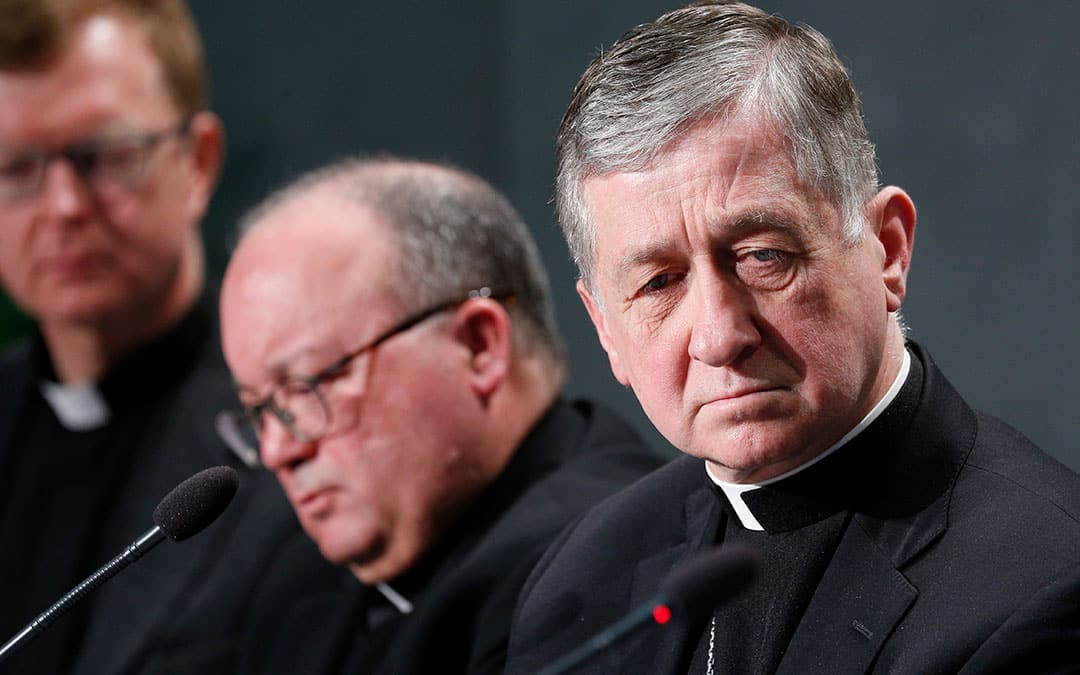CRISIS OF CREDIBILITY, CRISIS OF FIDELITY
by Stephen White

As the leaders of the world’s episcopal conferences and the Roman Curia meet with Pope Francis this week to address the “protection of minors,” there should be no confusion about the nature of the Catholic Church’s current crisis. And yet there is.
Confusion aplenty
Some will tell you the crisis is about the sexual abuse of minors by priests and bishops, and it surely is. But is that all? What about “vulnerable adults” (whatever that term means) or those who just happen to have passed the age of majority when they were abused? Isn’t it also about episcopal malfeasance and the cover-up for those crimes? Or about all kinds of unchastity among the clergy, and the failure of spiritual fatherhood such sins entail? What about the “gay lobby” we hear so much about, and its networks of influence and blackmail in chanceries, seminaries, and the Vatican? What about clericalism, simony, and the corrupting effect of power, influence, and money? What about a reluctance to name sin for what it is?
The current crisis is all these things, bound together in one festering, diabolical mess. Treating any one of these problems without addressing them all is a bit like trying to cure cancer by removing part of a tumor. It not only fails to cure the sickness, but it weakens the body in its struggle against the remaining disease. A thorough and comprehensive treatment is called for.
A crisis of credibility
The crisis, especially in its current iteration, is also a crisis of credibility. The profound loss of the people’s trust in the leaders of the Catholic Church endangers the Church’s unity and makes renewal and recovery that much more difficult. The need for accountability—both for abusive priests and bishops and those who have covered for them—is immediate and pressing. Laity don’t trust bishops to police their own. But institutional reforms and mechanisms, while necessary for accountability, won’t ultimately resolve the crisis because they only deal with failings after the fact. Pope Francis, to his credit, seems to understand this.
“[Credibility] cannot be regained by issuing stern decrees or by simply creating new committees or improving flow charts, as if we were in charge of a department of human resources. That kind of vision ends up reducing the mission of the bishop and that of the Church to a mere administrative or organizational function in the “evangelization business.” Let us be clear: many of those things are necessary yet insufficient, since they cannot grasp and deal with reality in its complexity; ultimately they risk reducing everything to an organizational problem.”
Following the McCarrick trail of clues
The recent laicisation of Theodore McCarrick, for example, did nothing to resolve any of the underlying questions about why he was rose through the ecclesiastical ranks despite persistent rumors about his misbehavior. Pope Francis has insisted that, regarding McCarrick, the Church must “follow the path of truth wherever it may lead.” That path has led to McCarrick’s dismissal from the clerical state, but not much of the truth about McCarrick’s career has been brought forth so far.
The McCarrick case has been particularly damaging to the Church’s credibility, both because of the hypocrisy it reveals and because of the kind of pharisaical thinking that helped that enabled it. For decades—and long before Francis was pope, it should be noted—Church leaders seemed content to hide behind the (necessary) legal distinctions between the abuse of a minor and a bishop’s abuse of his seminarians and young priests. But does anyone doubt that, if McCarrick had just stuck to seminarians and left the under-18s alone, he’d still be a cardinal today? Perhaps not, but, then, perhaps so.
Getting rid of obtuseness
Insisting on “zero tolerance” for the abuse of minors while treating the abuse of “adults” as if it were merely a source of embarrassment rather than a sin that cries out to heaven suggests a disturbing obtuseness about the seriousness of unchastity. Why did so many, both here and in Rome, seem so untroubled for so long by the rumored “dalliances” of a fellow cleric? Not to put too fine a point on it, but if our bishops don’t take fidelity to the Gospel seriously, at least when the Sixth Commandment is involved, why should we trust their judgment in other matters?
The crisis of credibility was built on foundations of infidelity. Credibility can only be restored through fidelity. And that’s a challenge, not just for priests and bishops, but for the whole Body of Christ. Fidelity doesn’t just mean “no more sinning,” though, of course, that would be good, too. It means telling the truth about the Church’s sins—both sins of commission and omission. It means insisting that lying never serves the good of the Church and always serves the purposes of the Enemy.
To recover a sense of sin
It means recovering a true sense of the horror of sin and the staggering gratuity of God’s mercy. It means never forgetting that sin really does imperil immortal souls and that God’s grace really does suffice. It means taking fidelity—as in faithfulness to vows—seriously, both for laity and clergy.
It means taking seriously the ecclesial dimension of sin and forgiveness: our sins are never “private” affairs between us and God. It means recovering a proper sense of the danger of how sin causes scandal and taking seriously the Lord’s own admonition: “Temptations to sin are sure to come; but woe to him by whom they come! It would be better for him if a millstone were hung around his neck and he were cast into the sea than that he should cause one of these little ones to sin” [Luke 17.1-2].
Restoring credibility through fidelity also means the Church can’t be embarrassed by her own teachings on human sexuality. We must stop treating sexual sin as “normal” and chastity as some unattainable ideal or the calling of a rare few. It means rejecting the lie that says the Church will be well-served by accommodating to the spirit of the age, especially an age so confused and disordered as ours.
The answer: a renewal of fidelity
What is needed, above all and as always, is a renewal of fidelity to Christ and the Cross. There are no shortcuts around conversion. There’s no detour around Calvary. Anyone who is looking for such a shortcut is half way to giving up. And that is one more reason—perhaps the best reason—for seeking renewal in fidelity to Christ and his Cross: therein lies our one and only hope.
Stephen White is a fellow in Catholic Studies at Washington’s Ethics and Public Policy Centre.






